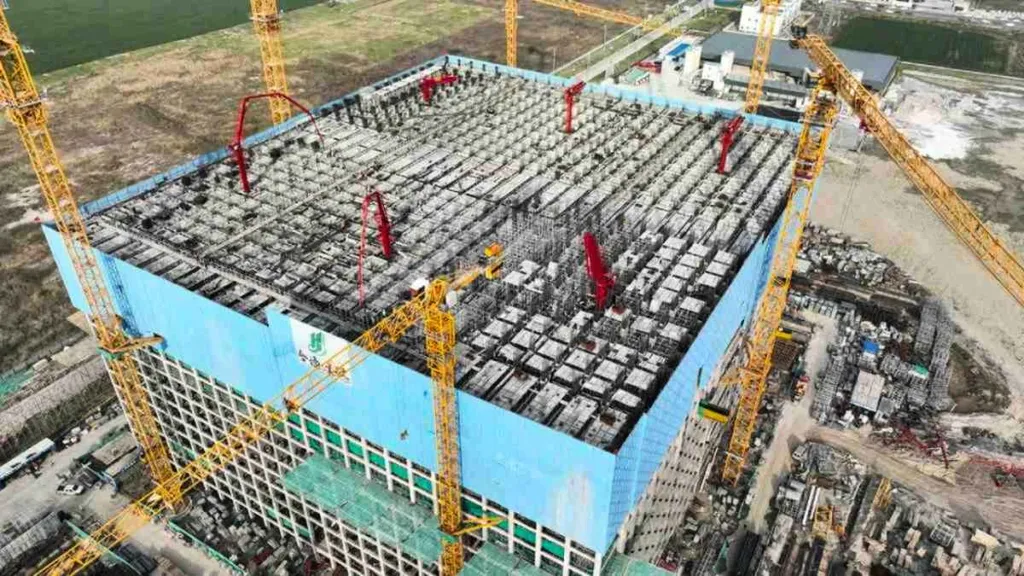In the relentless pursuit of stronger, more resilient construction materials, a team of researchers led by Weizhun Jin from the College of Civil Engineering at Henan University of Engineering in China has made a significant stride. Their work, published in the journal ‘Developments in the Built Environment’ (which translates to ‘建筑环境发展’ in Chinese), explores the impact of blending two types of fibers—polyvinyl alcohol fiber (PVAF) and basalt fiber (BF)—on the mechanical properties and microstructure of ultra-high performance concrete (UHPC) under high temperature curing. The findings could have profound implications for the energy sector, particularly in applications requiring robust materials that can withstand extreme conditions.
The study reveals that the optimal balance of PVAF and BF can significantly enhance the tensile strength of UHPC. “When the PVAF content is 0.5% and the BF content is 1.5%, the tensile strength of UHPC under high temperature curing reaches a maximum value of 10.2 MPa,” explains Jin. This represents a 75.9% increase compared to UHPC without fiber addition, outperforming even UHPC with only PVAF or only BF addition. The interweaving of these fibers forms a denser reinforcing network, which can jointly bear tensile stress, further bolstering the material’s strength.
The research also highlights the nucleation effect of PVAF, which accelerates cement hydration to generate more calcium-silicate-hydrate (C-S-H), a key component in the strength and durability of concrete. Meanwhile, high temperature curing promotes cement hydration around BF, contributing to the overall enhancement of the material’s properties.
The commercial impacts of this research are substantial. In the energy sector, where materials often face extreme temperatures and pressures, the development of stronger, more durable UHPC could lead to more efficient and safer infrastructure. For instance, the use of such advanced materials in nuclear power plants, offshore wind turbines, and other energy facilities could enhance their longevity and reduce maintenance costs.
Moreover, the findings could pave the way for innovative applications in other industries, such as aerospace and defense, where materials must withstand harsh environments. The potential for cost savings and improved performance is immense, making this research a significant step forward in the field of advanced construction materials.
As the energy sector continues to evolve, the demand for high-performance materials will only grow. This research by Jin and his team not only addresses this need but also opens up new avenues for exploration. The interweaving of different fibers to create stronger, more resilient materials is a concept that could be applied in various contexts, leading to a new generation of construction materials that are better equipped to meet the challenges of the future.
In the words of Jin, “The interweaving of PVAF and BF can form a denser reinforcing network and jointly bear tensile stress, further enhancing the tensile strength of UHPC.” This insight could very well shape the future of construction materials, making them stronger, more durable, and better suited to the demands of modern infrastructure.

